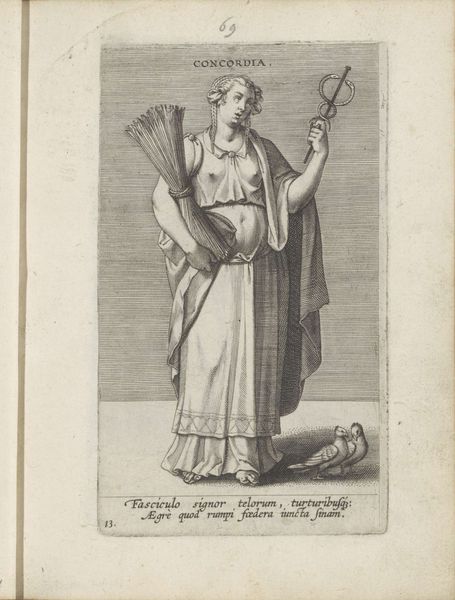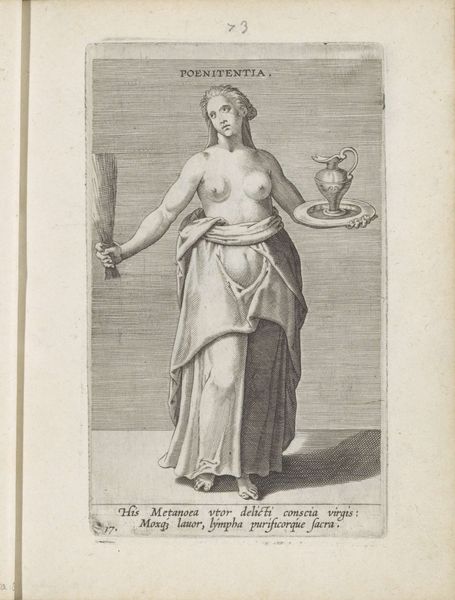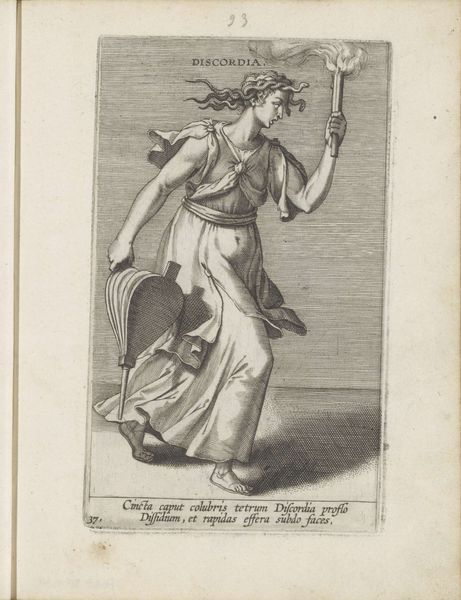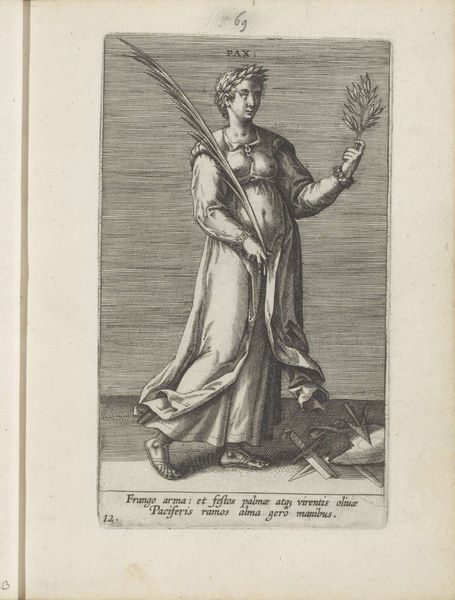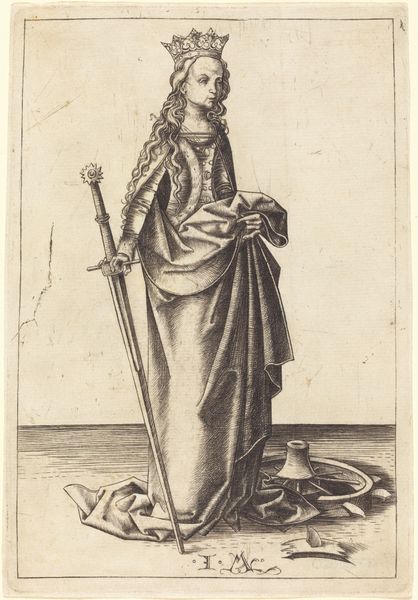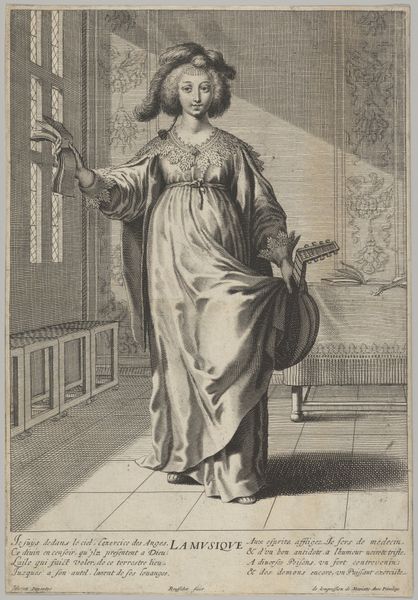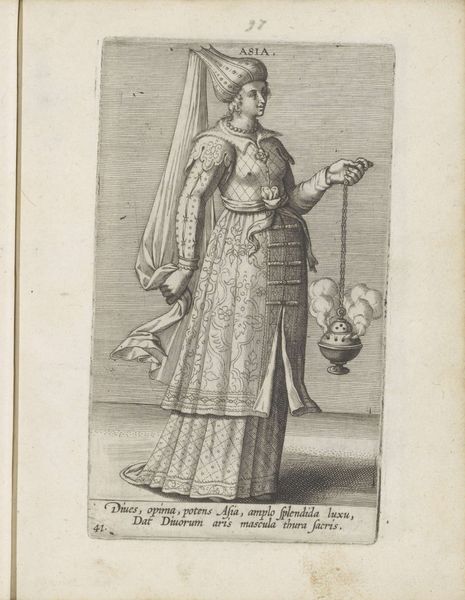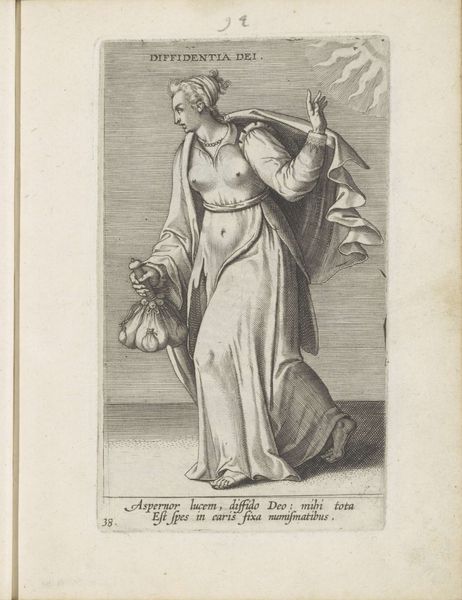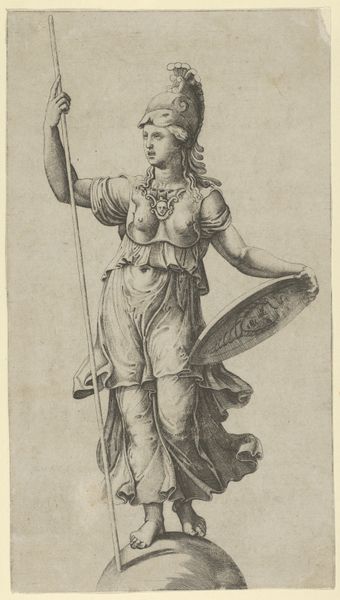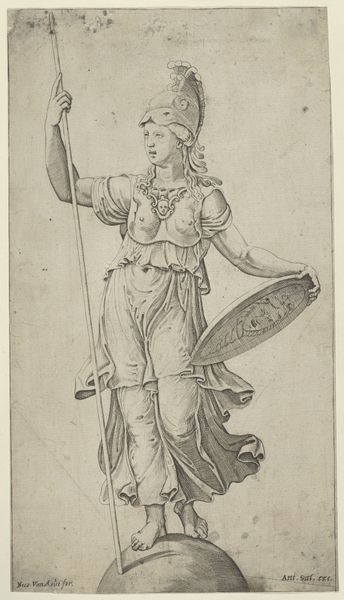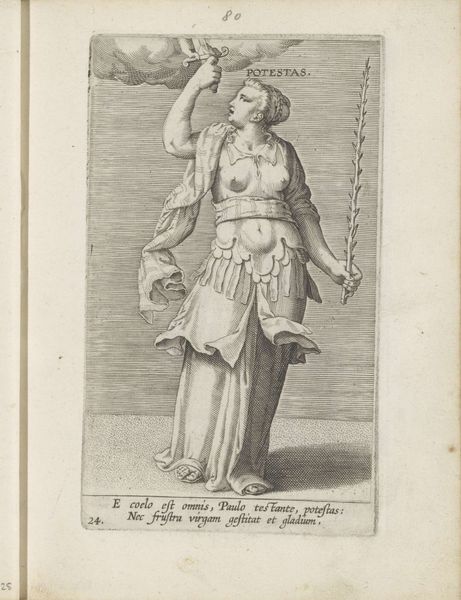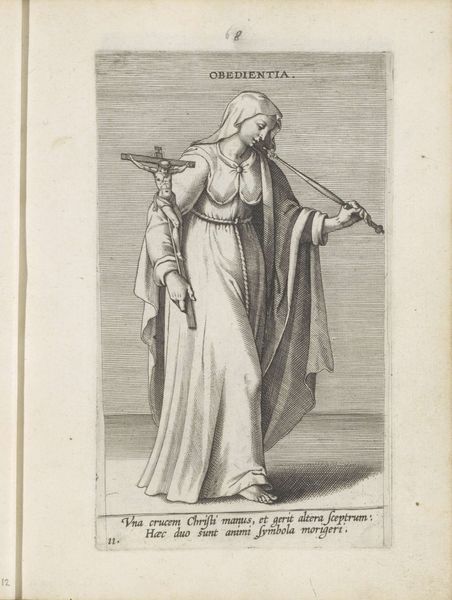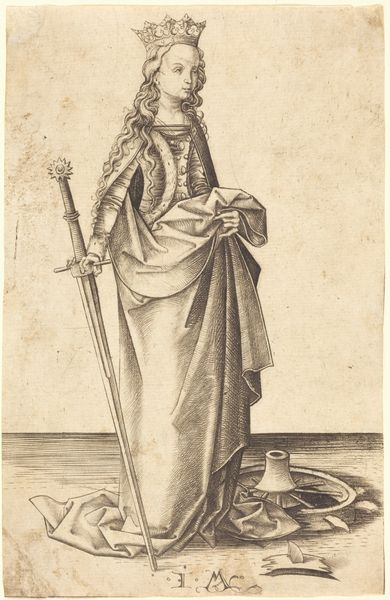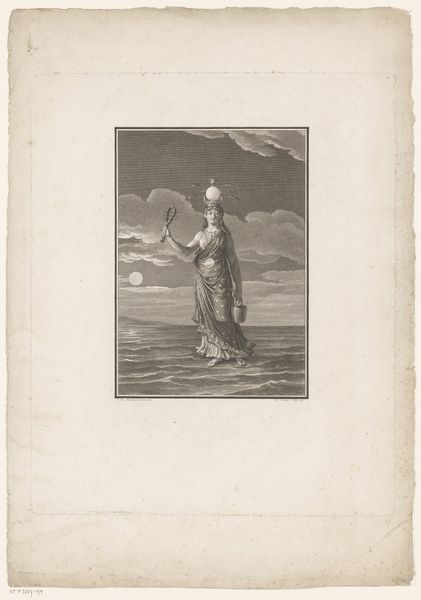
#
pencil drawn
#
aged paper
#
toned paper
#
light pencil work
#
photo restoration
#
pencil sketch
#
old engraving style
#
personal sketchbook
#
old-timey
#
19th century
Dimensions: height 151 mm, width 91 mm
Copyright: Rijks Museum: Open Domain
Philips Galle made this print, "Bedrog," which translates to "Deceit," sometime between 1537 and 1612, using an engraving technique. This process involves cutting lines into a metal plate, applying ink, and then transferring the image to paper through a printing press. The stark contrast between the lines and the blank paper gives the artwork its graphic quality. The image depicts a female figure with a mask-like face holding a fishing rod with a small fish as bait. Behind her, a mousetrap symbolizes further deception. The Latin text reinforces the theme of trickery, suggesting that deceit is artfully constructed. Printmaking was crucial in disseminating ideas and images during the early modern period. Galle’s choice of this medium underscores the widespread nature of deception, turning a commentary on moral corruption into a commodity, available for purchase and distribution. This piece highlights how craft and design intersect with social critique, challenging the traditional boundaries of art by embedding morality within the materiality of the print itself.
Comments
No comments
Be the first to comment and join the conversation on the ultimate creative platform.
